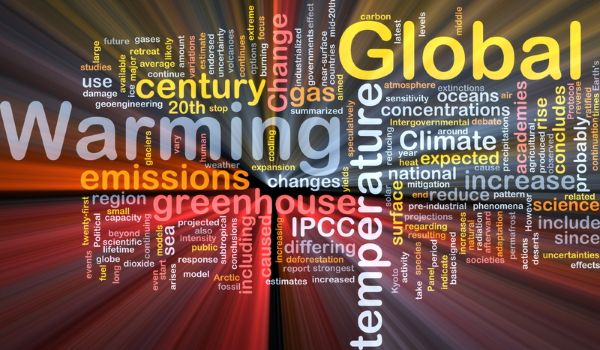Is quantifying climate damage caused by coal, oil and gas an exercise in futility? Not according to governments passing punitive legislation and environmental law firms representing collective action lawsuits from citizens, including young people.
New Research Calculates Climate Pollution From Fossil Fuel Companies
The Washington Post reported on April 24, 2025, that two scientists had published a paper in the journal Nature that described their effort to calculate the cost of planet-warming carbon pollution. They collected Scope 1 and 3 emissions data from 111 fossil fuel companies which, when added up, were responsible for US$ 28 trillion in damages to the environment from extreme heat between 1991 and 2020. That number is $5 trillion greater than the Gross Domestic Product (GDP) of the United States in 2024.
Their methodology produced a “transparent, reproducible and flexible framework” to attribute damage and particularized harm from individual emitters, drawing quantitative linkages” to inform litigators. They noted that holding emitters liable for global warming “mirror efforts to hold industries such as tobacco and pharmaceuticals liable under legal standards such as the duty of care, public nuisance, failure to warn or strict liability.” They further stated that fossil fuel companies “have long been aware of climate change” and failed to address it in terms of their operating responsibility to the public.
Authors Justin Mankin from Dartmouth and Chris Callahan from Stanford described their “accounting exercise” as one that lifts the “veil of plausible deniability” from the fossil fuel industry. Mankin and Callahan chose extreme heat as their focus, looking at it from a perspective of economic growth, agricultural impacts, and worker productivity decline. They linked each company’s emissions to economic damage and calculated the results in US dollars.
Mankin and Callahan’s model used public data and self-reported historical emission figures from 180 fossil fuel and cement companies going back to the beginnings of the Industrial Revolution in the 19th century. They then applied the Finite Amplitude Impulse Response (FAIR) climate model and created more than 1,000 simulations to determine a damage assessment number related to the rate of global warming in the atmosphere. Finally, they linked the temperature increases to financial losses with a formula that equated heat intensity increases to reduced economic output.
Who were the big five fossil fuel emitters in the years between 1991 and 2020? What was the assessed dollar damage that Mankin and Callahan attributed to each? Here are the Big 5:
- Saudi Aramco, damages assessed at $2.05 trillion. In 2024, the company reported net profits of $106.2 billion based on $436.6 billion in gross revenue. Damages equal close to 5 times gross revenue and 20 times net profit.
- Gazprom, damages assessed at $2 trillion. In 2024, net profits were 1.2 trillion rubles (US$ 14.8 billion) based on 10.7 trillion rubles ($130.8 billion) in gross revenue. Damages are 15 times gross revenue and 135 times net profit.
- Chevron, damages assessed at $1.98 trillion. In 2024, net profits were $17.66 billion based on gross revenue of $202.8 billion. Damages equal 9.8 times gross revenue and 112 times net profit.
- ExxonMobil, damages assessed at $1.91 trillion. In 2024, net profits were $33.7 billion based on gross revenue of just under $350 billion. Damages equal 5.5 times gross revenue and 57 times net profit.
- BP, damages assessed at $1.45 trillion. In 2024, net profits were $381 million with gross revenue at $189 billion. Damages equal 7.7 times gross revenue and 7670 times net profit.
So far, not one of these five or any other fossil fuel company yet had to pay a penalty for the carbon pollution they cause linked to climate change. Imagine if they had to pay the equivalent of the assessed damage. All five would be wiped out. Instead, at best, some jurisdictions like Canada are issuing carbon pricing charges to companies that are lobbying fiercely to have these cancelled.
Legal Avenues To Stop Polluters
Attempts to penalize polluters and the governments that enable them are growing. Establishing causation is the first step in assigning blame and determining who should pay. The data, such as that described above, represents the kind of evidence to establish causation and is part of a growing body produced by academic contributors for citizens’ movements and environmental organizations to cite in lawsuits.
The Mankin and Callahan report coincided with a recent ruling by the Ontario Supreme Court in Canada related to an ongoing lawsuit, Mathur et al. v. Her Majesty the Queen in Right of Ontario, that was launched in 2019 in Canada by seven young people. An October 2024 ruling by Ontario’s Court of Appeal stated that the Province of Ontario had a responsibility for the life and security of its citizens, including climate change impacts, under Sections 7 and 15 of the Canadian Charter of Rights and Freedoms. The province challenged the ruling, which, when heard by a higher court, was rejected in favour of the seven young people.
Another favourable ruling occurred in The Hague, Netherlands, in a 2015 lawsuit brought by the Urgenda Foundation and 900 Dutch citizens. The ruling ordered the government of the Netherlands to meet its original targeted greenhouse gas (GHG) emission reductions rather than reduce them through legislation. The court stated that it was the government’s “duty of care” responsibility to protect the right to life of its citizens.
So far, there are more than 500 studies linking extreme weather events to fossil fuel emissions, and more than 1,400 active court cases launched by citizen groups and governments against the fossil fuel industry. Some governments have enacted legislation to impose fines on fossil fuel companies that are non-compliant with meeting emission reduction targets. But so far, no oil and gas company has been penalized.
The Coal Problem
Mankin and Callahan focused on the oil and gas sector. What about coal? According to CarbonBrief, a British website covering climate science, emissions from coal mining is causing $3 trillion in damage to the environment annually. Add that number to the more than $9 trillion in Mankin and Callahan’s calculations coming from oil and gas and you have a total greater than half of Americas’s annual GDP.
Studies of coal mining and thermal power plant operations show it is an equal if not greater source of GHGs than oil and gas. Mining produces carbon dioxide (CO2) and methane (CH4) emissions. Mines also pollute local watersheds. When coal is burned in power plants and in steel, cement and aluminum manufacturing, it adds particulate matter, volatile aerosols and contaminants that also find their way into aquifers, rivers and lakes.
CH4 emissions from global coal mining alone are equal to India’s total carbon emissions, the country that is the third-largest GHG contributor on the planet. India’s thermal power plants produce half a billion tons of CO2 every year.
Then there is China, an even bigger carbon polluter from coal, although the country doesn’t publish that number. What we do know is that China consumed 4.9 billion tons of coal in 2024, which was used to produce more than half of the country’s electricity requirements in thermal power plants.
That’s why citizen and environmental lawsuits are on the rise against coal mining and utilities. That is also why more national and subnational governments, for example, Vermont and New York, are passing climate laws requiring coal mining and utility companies to pay into super funds to compensate for historic and future climate-related environmental and health damages.
If Mankin and Callahan had applied their model to coal, how many more trillions in climate damages would we see being added to the total calculation?








